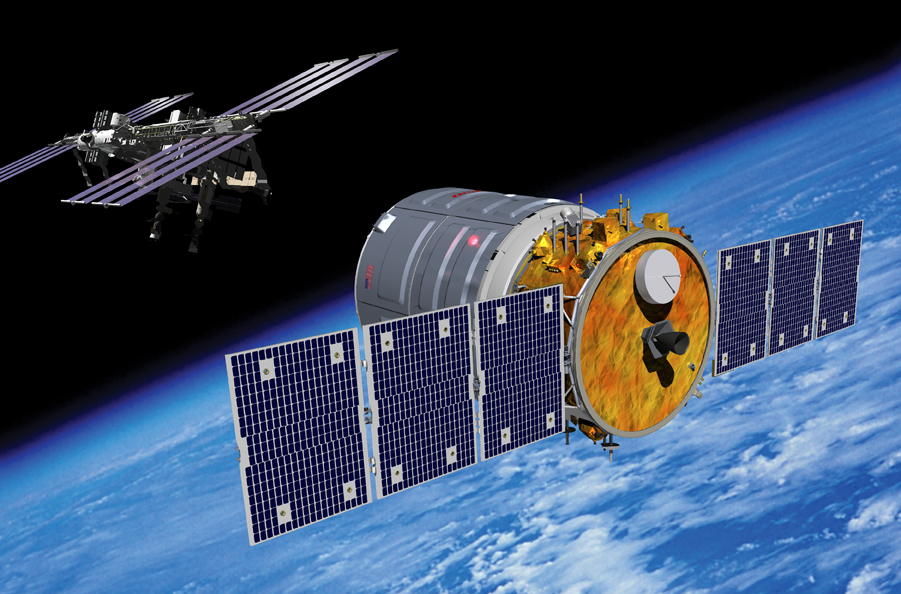
After many delays, Orbital Sciences Corp. stands ready to stage the long-awaited Commercial Orbital Transportation Services (COTS) Demonstration Mission—designated “ORB-D”—of its Cygnus cargo craft to the International Space Station. Liftoff of the two-stage Antares rocket, carrying Cygnus, was originally scheduled for 11:16 a.m. EDT Tuesday, 17 September, at the start of a 15-minute “launch window,” after which the craft would have pursued a five-day independent flight to rendezvous with the multi-national outpost. However, Orbital reported Saturday that it would postpone the launch “by at least 24 hours,” due to a combination of poor weather at the Mid-Atlantic Regional Spaceport (MARS) on Wallops Island, Va., during Antares’ rollout to Pad 0A and a technical issue which arose during a combined systems test Friday evening. “After comprehensive inspection and testing,” Orbital explained, “the problem was found and turned out to be an inoperative cable, which is being replaced.” Antares teams are currently working toward a new launch time of 10:50 a.m. EDT Wednesday, 18 September. In a manner not dissimilar to the profile adopted by SpaceX’s Dragon vehicle, Cygnus will be captured by the station’s 57-foot-long Canadarm2 robotic arm—controlled by Expedition 37 astronauts Karen Nyberg and Luca Parmitano—and berthed at the “nadir” (Earth-facing) port of the Harmony node Saturday, 22 September.
This week’s momentous events come at the end of a long and tortuous development and testing process for both Antares and Cygnus. In January 2006, NASA announced COTS as a program to develop vehicles for the commercial transportation of equipment and eventually crew to and from the ISS. In the early stages, the front runners appeared to be SpaceX and Rocketplane Kistler—both companies having won Phase I of the program in August 2006—but NASA terminated its agreement with RK in September 2007, due to insufficient funding having been raised.
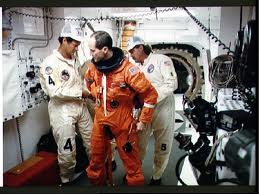
As described in last weekend’s history articles, it was recently announced that the first Cygnus mission will be named in honor of the late G. David Low, a three-time space shuttle astronaut and Orbital executive. Under his “extraordinarily inspiring” leadership as Senior Vice President and Program Manager of Orbital’s COTS effort, from September 2006 until shortly before his death in March 2008, Low served as “a primary architect” in positioning the Dulles, Va.-based corporation to win the second-round selection.
In February 2008, NASA announced its selection of Orbital as a COTS partner, and the following December the two winners of the Commercial Resupply Services (CRS) contracts were identified. Under the provisions of those contracts, NASA “ordered eight flights valued at about $1.9 billion from Orbital and 12 flights valued at about $1.6 billion from SpaceX.” The flights were to be executed by the end of 2016, and each company was required to transport a total of approximately 44,000 pounds of supplies to the ISS.
Despite having secured such a significant contract in the annals of commercial space endeavor, Orbital endured a multitude of technical and organizational problems which repeatedly delayed the maiden voyage of its large Antares launch vehicle. Propelled by a pair of Aerojet-built AJ-26 engines—whose heritage extends back to the Soviet era, having originated as NK-33 powerplants for Russia’s ill-fated N-1 lunar rocket—the 133-foot-tall Antares is Orbital’s first cryogenic booster and its largest launcher to date. The AJ-26s are fueled by rocket-grade kerosene (RP-1) and liquid oxygen and are part of a consignment of 36 engines bought from Russia in the mid-1990s at a cost of $1.1 million apiece. Orbital added modern electronics and incorporated performance enhancements, and at the instant of launch each AJ-26 produces a sea-level thrust of about 338,000 pounds.
During several lengthy test firings since March 2010, the engines have functioned generally well on the test stand. A notable anomaly occurred in June 2011, when one of them caught fire following a kerosene leak, apparently due to stress-corrosion cracks in its 40-year-old metal. At the same time, problems with the MARS site on Wallops Island, Va.—including the construction of new kerosene and liquid oxygen tankage and the certification of propellant-loading operations—have caused other headaches and conspired to delay the first Antares launch well past its original spring 2012 target date.
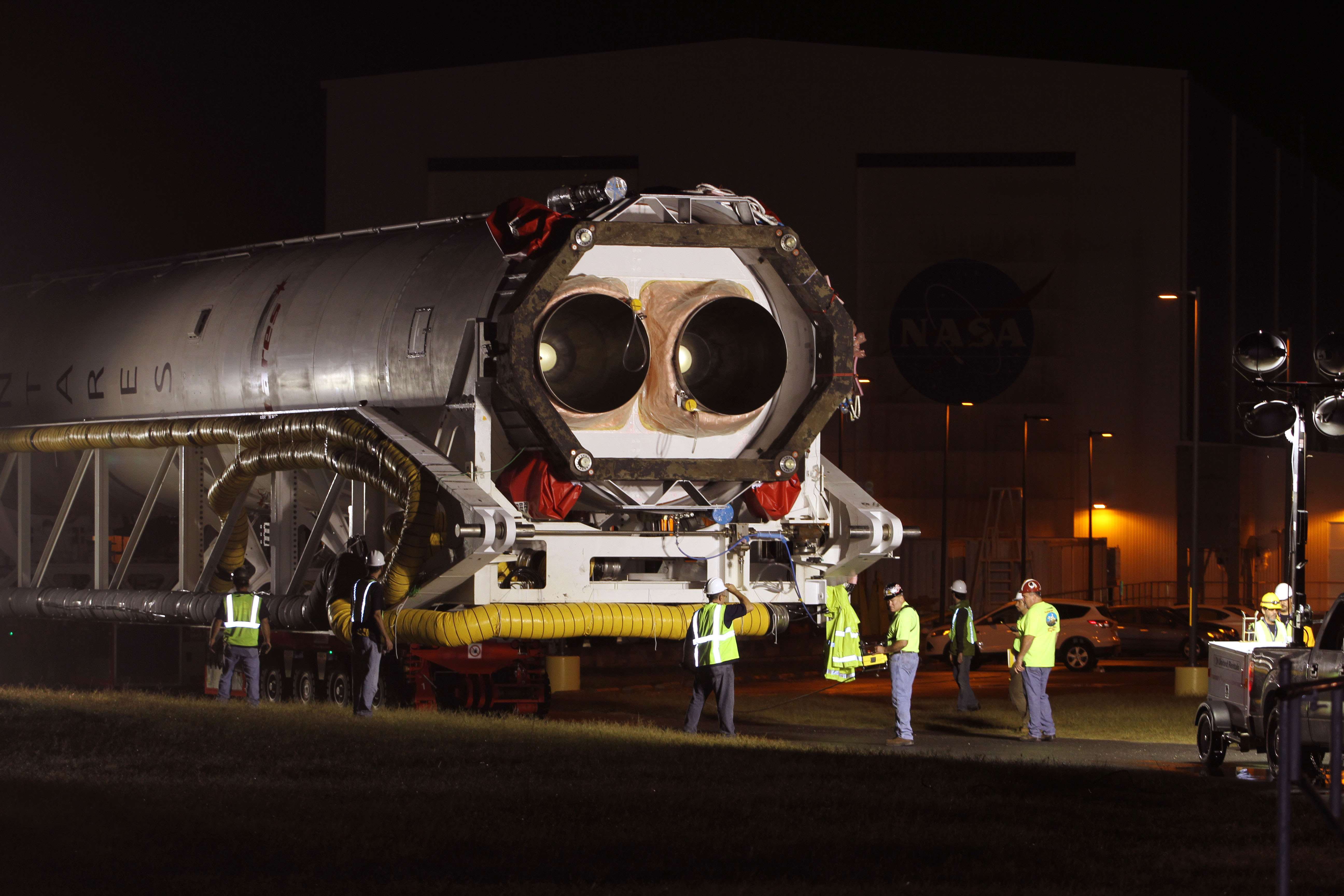
As the rocket evolved, so did its name. Until December 2011, Antares was known by its developmental name of “Taurus II,” but this was changed in accordance with Orbital’s tradition of using ancient Greek celestial names—Pegasus, Taurus, and Minotaur, for instance – —for its programs. “A launch vehicle of this scale and significance,” explained Orbital’s President and CEO David Thompson, “deserves its own name.” In addition to being one of the brightest stars in the sky, the red-hued supergiant star Antares has also lent its name to the Lunar Module which carried Apollo 14 astronauts Al Shepard and Ed Mitchell to the surface of the Moon in early 1971.
Aside from the problems, NASA’s confidence in the rocket has remained strong, and in June 2012 the space agency added Antares to its NASA Launch Services Contract (NLS-II), which will enable Orbital to bid for future missions to transport medium-class scientific payloads into space. NASA’s confidence was vindicated in spectacular style on 21 April 2013, when the first Antares mission—designated “A-ONE”—rocketed away from Pad 0A at MARS and lofted a mass simulator of the Cygnus craft into an orbit of 155-186 miles, inclined 51.6 degrees to the equator, providing a close analog for the opening minutes of a “real” ISS mission.
The enormous success of A-ONE proved a much-needed shot in the arm for Orbital, although initial hopes that ORB-D, the first flight of a “real” Cygnus on the COTS test flight to the ISS, might be attempted as soon as June-July 2013 proved shortsighted. One of the AJ-26 engines on the second Antares required replacement and testing and substantial traffic of visiting cargo craft from other nations to the space station in the June-August timeframe—including Europe’s Automated Transfer Vehicle (ATV)-4 “Albert Einstein” and Japan’s H-II Transfer Vehicle (HTV)-4 “Kounotori” (“White Stork”)—produced a No Earlier Than (NET) launch target of mid-September for ORB-D and Cygnus.
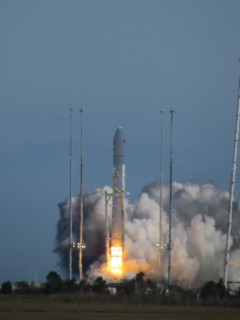
During the summer months, processing of both the Antares booster and Cygnus have entered high gear. Fueling of the cargo ship’s unpressurized Service Module (SM) with hydrazine and nitrogen tetroxide maneuvering and station-keeping propellant was conducted at the V-55 Hypergolic Fueling Facility at NASA’s Wallops Flight Facility between 15-19 April. Due to the highly volatile nature of both propellants, they were loaded several days apart, and attending technicians were required to wear Self-Contained Environmental Protection Ensemble (SCAPE) “bunny suits.” After the completion of fueling, Cygnus was transferred to the Horizontal Integration Facility (HIF) for several months, ahead of installation atop Antares in late August.
In the meantime, the rocket’s two stages had been mated in the HIF in July. In addition to the AJ-26-powered first stage, Antares’ second stage is equipped with a Castor-30A engine, built by Alliant TechSystems. With a maximum thrust of 89,000 pounds, this engine was originally part of the first stage of Orbital’s Athena and Taurus I rockets and can trace its heritage back to the Peacekeeper missile. Both the A-ONE and Cygnus-1 missions will utilize the Castor-30A. An upgraded Castor-30B motor will be introduced for the first dedicated CRS mission of Cygnus—which may fly as soon as December 2013—and a “stretched” Castor-XL to boost payload capacity from 4,400 pounds to almost 6,000 pounds is expected to power the final five cargo missions in 2014-2016.
Rollout of the Antares/ORB-D vehicle, in a horizontal position, to Pad 0A began at 2:30 a.m. EDT Friday, 13 September,and, after a journey of almost a mile from the HIF to the pad, the giant rocket was “hard down” and vertical at the launch complex by 1 p.m. The entire rollout procedure was performed by the Transporter-Erector-Launcher (TEL), which also interfaces Antares with the Pad 0A support utilities. Orbital’s Chairman and CEO David Thompson lauded the successful rollout as “the final steps leading up to next week’s launch” and noted that the ORB-D mission marked “the completion of a five-year journey that NASA and our company embarked on in 2008 to create a new medium-class rocket, a sophisticated logistics spacecraft, and a world-class launch site at the Wallops Flight Facility.”
Cygnus is a two-piece spacecraft, comprising a Pressurized Cargo Module (PCM)—built by Thales Alenia Space and based in design upon the Multi-Purpose Logistics Modules (MPLMs) used for cargo delivery flights by the shuttle—and Orbital’s own home-built Service Module (SM). The former will transport around 1,200 pounds of cargo to the ISS and bring about 2,200 pounds of trash away for a destructive re-entry in the atmosphere. Electrical power for Cygnus comes from a pair of gallium arsenide solar arrays, which produce a total of 4 kW.
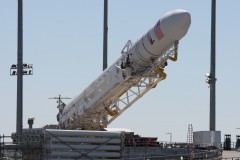
Assuming that no weather or technical problems conspire to delay Wednesday’s planned launch, the Antares/Cygnus flight controllers will receive their “Call to Stations” at around 3 a.m. EDT. By about three hours ahead of the scheduled liftoff time, the process of chilling-down the fuel lines of the rocket’s first stage with liquid nitrogen will commence, ahead of the fueling process. As noted by AmericaSpace’s Launch Tracker in the run-up to April’s A-ONE mission, this chill-down protocol serves to “prevent a shock to the equipment being hit by a rapid temperature change which could cause a catastrophic failure.”
Finally, the Antares/Cygnus launch team will be polled for its final recommendation. In the minutes after the “Go” call, the first propellants will begin flowing into the AJ-26 engines’ fuel lines. This loading process is critically timed to begin 90 minutes ahead of liftoff, due to time limits associated with the rapid boil-off of the cryogenic propellants. The final poll of the launch team will occur in a two-step process, beginning shortly after 10:20 a.m. EDT, and the 75-minute fueling operation should conclude at about 10:35 a.m., with propellants at Flight Ready levels. Three minutes later, the final “Go for Launch” will be received, the vehicle and payload will transfer to internal power, and the Transporter Erector Launcher will be armed to execute a rapid retraction at the instant of liftoff.
With five minutes remaining on the clock, Antares’ Flight Termination System (FTS)—tasked with destroying the vehicle in the event of a major accident during ascent—will be armed, and at T-3 minutes and 30 seconds the Terminal Count will get underway. The rocket’s autosequencer will assume primary control of all vehicle critical functions, commanding all events up to the ignition of the twin AJ-26 engines at T-2 seconds. Under careful computer control, the engines will ramp up to full power, producing a liftoff at 10:50 a.m.
Shortly after clearing the Pad 0A tower, Antares will execute a pitch and roll program maneuver to establish it onto the proper flight azimuth. Maximum aerodynamic turbulence will be encountered 80 seconds into the flight, and the AJ-26 engines will continue to burn hot and hard until they finally shut down about four minutes after launch. By now, the vehicle will have reached an altitude of almost 70 miles and the first stage will separate, leaving the Castor-30A-powered second stage and Cygnus to coast for two minutes, prior to jettisoning the bullet-like payload shroud. Ignition of the Castor-30A should occur about at 10:56 a.m., burning for 2.5 minutes and providing a final push to insert the cargo ship into a low-Earth orbit, inclined 51.6 degrees to the equator.
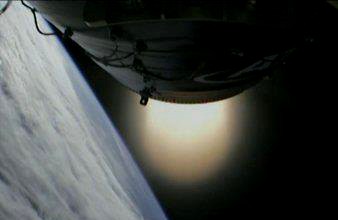
Separation of Cygnus from the second stage will occur about ten minutes into the mission. Like SpaceX’s Dragon COTS Demonstration Mission, back in May 2012, Orbital’s ORB-D mission will see Cygnus deploy its solar arrays and appendages and execute a complex series of orbit-raising and “phasing” maneuvers to bring it into the vicinity of the ISS. Despite Orbital’s decision to effect a 24-hour launch postponement, rendezvous of ORB-D with the space station is still scheduled for 22 September, four days into the mission. During rendezvous, Cygnus will demonstrate its ability to “hold” its position at specific distances, before entering the Keep-Out Sphere (KOS), a virtual zone extending about 660 feet around the ISS to prevent collisions. The spacecraft will proceed gradually to a distance of about 33 feet. It will then be grappled by the 57-foot-long Canadarm2 and berthed onto the “nadir” (Earth-facing) port of the Harmony node.
At the time of Cygnus’s scheduled arrival, the station’s Expedition 37 crew will consist of just three members—Commander Fyodor Yurchikhin of Russia, together with Italian astronaut Luca Parmitano and NASA’s Karen Nyberg—although three others are due to arrive on 25/26 September aboard Soyuz TMA-10M. Cosmonauts Oleg Kotov and Sergei Ryazansky and NASA astronaut Mike Hopkins will boost the ISS population back up to its normal, six-member strength, and among their early work will be the lengthy process of entering and unloading cargo from Cygnus.
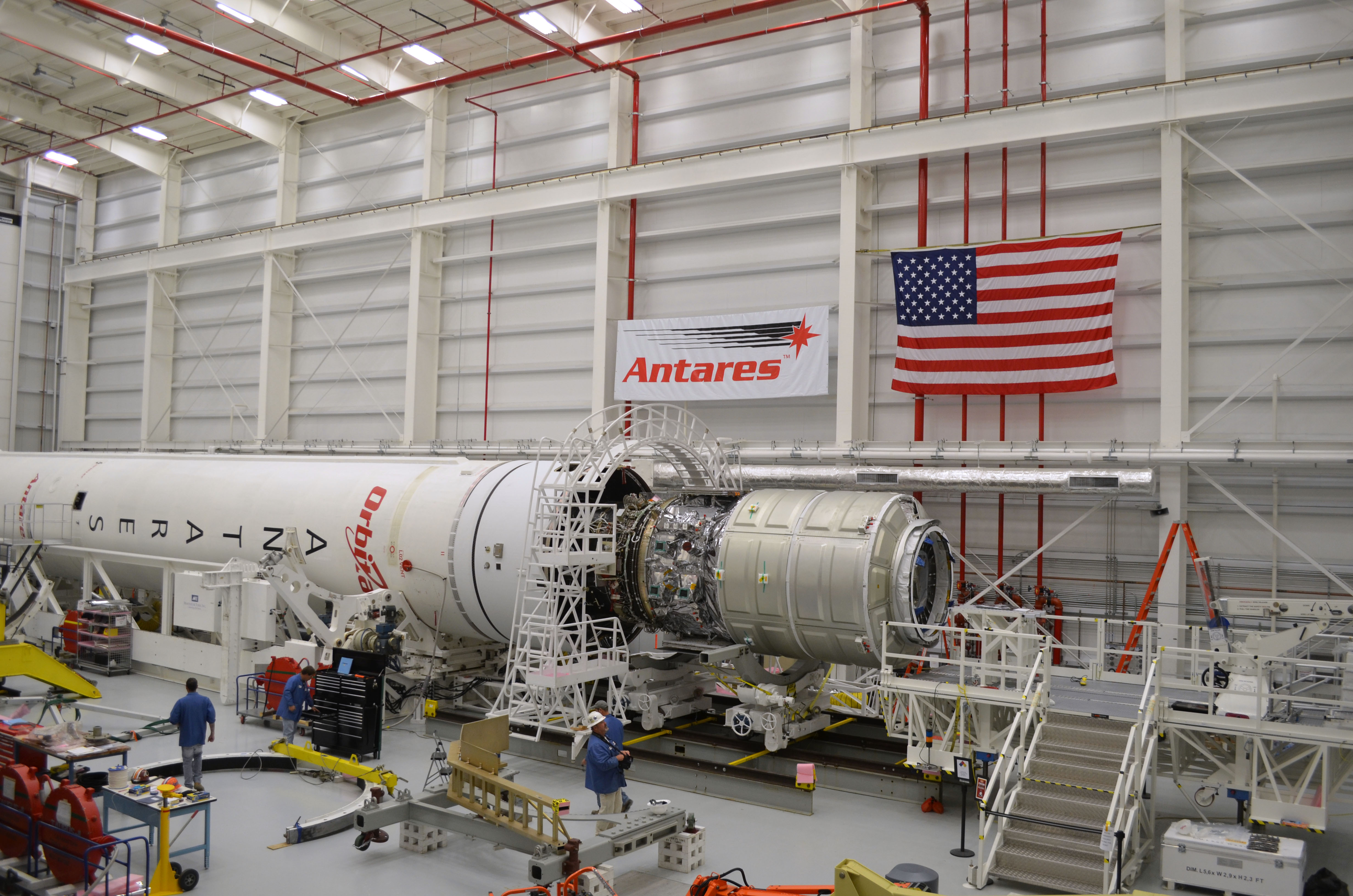
As detailed by Frank Culbertson, Orbital’s Executive Vice President and General Manager of the Advanced Projects Group, at a 4 September briefing at the Johnson Space Center (JSC) in Houston, Texas, Cygnus will remain berthed at the ISS for “approximately 30 days.” Its departure from the station is anticipated on about 22 October. Culbertson—a former astronaut, who commanded Expedition 3 in August-December 2001 and was the only U.S. citizen off the planet at the time of the 9/11 terrorist attacks on New York and Washington, D.C.—explained that all aspects of Orbital’s capability will be evaluated on the ORB-D mission. “It is truly a demonstration mission,” he said, “where we’re demonstrating all phases of what we’re required to do in our contract.”
Culbertson noted that around 1,500 pounds of payload had already been loaded aboard Cygnus by 4 September, with the remaining 350 pounds to follow by the weekend of 7/8 September, demonstrating an operational ability to accomplish the “late loading” of supplies ahead of launch. He also added that Orbital is targeting its first dedicated cargo mission under the CRS contract—dubbed “ORB-1″—to launch about 47 days after the departure the ORB-D demonstration mission. That places Orbital’s first CRS mission in the second week of December, although the most recent NASA manifest has SpaceX’s CRS-3 Dragon mission also scheduled for 9 December. Last month, however, it was reported that the SpaceX flight would be postponed until mid-January 2014, allowing Cygnus to fly both its ORB-D and ORB-1 missions before the end of the year. Looking forward into 2014, according to NASASpaceflight.com, ORB-2 is currently scheduled for launch in May, followed by ORB-3 in October.
Want to keep up-to-date with all things space? Be sure to “Like” AmericaSpace on Facebook and follow us on Twitter: @AmericaSpace
Missions » ISS » COTS » CYGNUS » CYGNUS-1 »



3 Comments
3 Pings & Trackbacks
Pingback:Orbital Sciences Primed for First Cygnus Cargo Mission to Space Station | Today in Space
Pingback:Smooth Sailing, Cygnus: Orbital’s New Cargo Ship Rockets to Space on ISS Supply Demonstration Mission | Space Safety Magazine
Pingback:Smooth Sailing, Cygnus: Orbital’s New Cargo Ship Rockets to Space on First ISS Supply Mission « AmericaSpace